The Jiyuan South Passenger Transport Station engineering design project is located on the north side of the South Second Ring Road of Jiyuan City and the west side of Tangdi South Road. The construction unit is Jiyuan Huiji Industrial Co., Ltd. It is divided into 1#, 2#, 3#, 4#, 5#, and 6#; 6 units, each main building has a single floor, a construction area of 2779.10㎡, a building height of 8.53m, a light portal steel frame, and a steel consumption of 723t.
A steel structure transport station is a facility designed to support the transportation and logistics of steel structures—whether it’s for a construction project, industrial facility, or large infrastructure development. These stations are critical hubs for the efficient handling, loading, unloading, and transport of steel components and other related materials. They are typically located close to fabrication plants, construction sites, or ports, and are designed to handle large, heavy, and bulky steel structures.
1. Function and Purpose
A steel structure transport station serves as the intermediary between the manufacturing plant (where steel structures are fabricated) and the construction site (where they are assembled). Its primary functions include:
Storage and Staging: Temporary storage of steel components before they are dispatched to the construction site.
Handling and Loading: Efficient loading of steel components onto transport vehicles such as trucks, railcars, or ships.
Inspection and Quality Checks: Ensuring that all components are in good condition before shipping, including checking for defects, proper labeling, and documentation.
Coordination of Logistics: Managing the transportation of components to ensure timely delivery to the construction site, maintaining inventory, and coordinating with transportation companies.
2. Key Areas and Facilities
A steel structure transport station typically includes the following key areas:
Receiving and Inspection Area
Incoming Steel Components: Steel structures from fabrication plants are received at this area. They could include beams, columns, frames, girders, and other structural elements.
Inspection and Quality Control: A thorough inspection is done to ensure that the steel components are free from damage, defects, or imperfections before they are moved further in the process. This includes visual inspections, checking dimensions, and verifying the quality of the welds and coatings.
Inventory Management: The incoming materials are documented, and their conditions are recorded in the system for tracking purposes. This ensures that the right components are available when needed.
Storage Area
Organized Staging: Steel structures are stored in an organized manner based on their type, size, and destination. This helps facilitate quick access when needed and reduces time spent searching for materials.
Weather Protection: Depending on the station’s design, the storage area may be open or covered. If materials are stored outdoors, they may be covered with tarps or protective coatings to prevent rust or damage due to exposure to rain, snow, or sun.
Heavy Lifting Equipment: Storage areas are equipped with cranes, hoists, or forklifts capable of handling the heavy weight and large sizes of steel components.
Loading and Dispatch Area
Loading Docks: Once steel components are ready for transport, they are moved to the loading area. Large steel components are typically loaded onto flatbed trucks, trailers, railcars, or even ships, depending on the destination.
Cranes and Hoists: Overhead cranes or gantry cranes are commonly used to lift heavy steel components, especially those that are large or bulky.
Packaging and Securing: In this area, components are carefully secured to transport vehicles.
Documentation and Coordination
Logistics Management: A team manages the logistics of transporting the steel structures, including tracking shipments, coordinating schedules, and providing updates to customers or construction teams.
Export/Import Documentation: For international shipments, the transport station may also handle export documentation, customs clearance, and compliance with local or international regulations. This could involve coordinating with customs brokers or freight forwarders.
Safety and Compliance: Ensuring that all safety protocols and transportation regulations are followed during handling and shipping. This can include weight limits, hazardous material regulations (if applicable), and road safety requirements.
3. Transport Methods
Steel structures are typically large and heavy, so transport stations must be equipped to handle various transportation methods depending on the distance and size of the components. Common methods include:
Truck Transport
Flatbed Trucks: The most common method for transporting steel components to local construction sites. These trucks are equipped with flatbeds and capable of carrying large loads.
Specialized Trailers: For oversized or unusually shaped steel components, specialized low-bed or extendable trailers may be used to accommodate the size and weight.
Rail Transport
Railcars: Rail transport is a cost-effective option for long-distance transportation of steel structures, especially for large or bulk orders. Steel components are loaded onto specialized railcars equipped to carry oversized loads.
Rail Stations and Terminals: Transport stations may be located near major railway lines to facilitate easy transfer from truck to rail and vice versa.
Maritime Shipping
Container Shipping: For international shipments, steel structures may be placed in containers and shipped via cargo ships. Shipping containers are used to protect the components during transport.
Bulk Shipping: Large, bulky components may be shipped as breakbulk cargo on specialized ships designed to carry oversized or heavy loads.
Air Transport
Although rare due to the high costs involved, air freight may be used for transporting very urgent or small steel components that need to be delivered quickly to a remote location.
4. Heavy Equipment and Safety
Steel structure transport stations must have specialized equipment to move heavy and large loads. Key equipment includes:
Cranes (Overhead, Gantry, and Mobile): For lifting and moving heavy steel components within the station.
Forklifts: For handling smaller, lighter components or packages.
Forklift Attachments: Specialized attachments, such as steel clamps, are used to pick up steel sections without damaging them.
Safety Equipment: The transport station is equipped with safety barriers, warning signals, safety gear, and fire suppression systems to ensure the safety of workers during handling and transport.
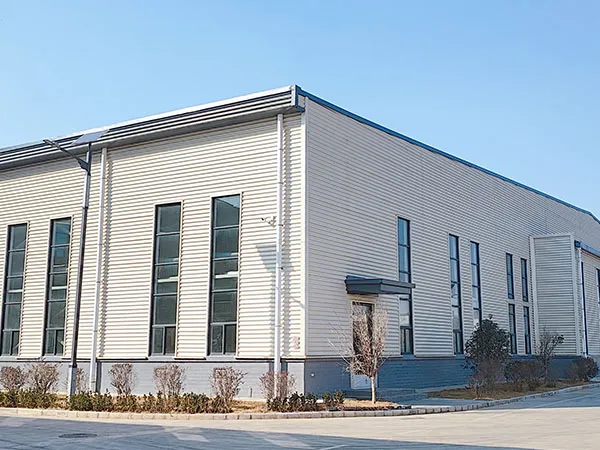
Steel Structure Workshop
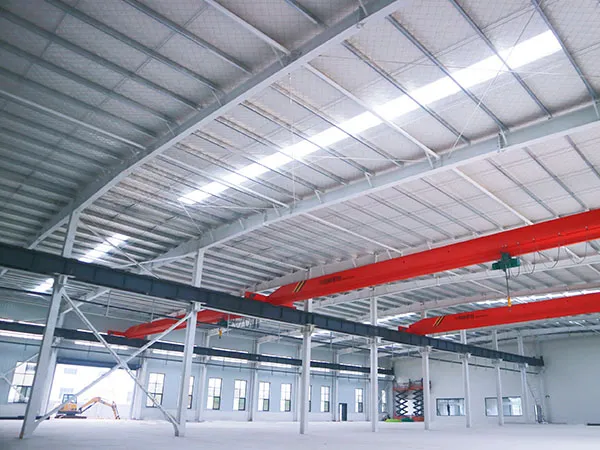
Steel Structure Factory
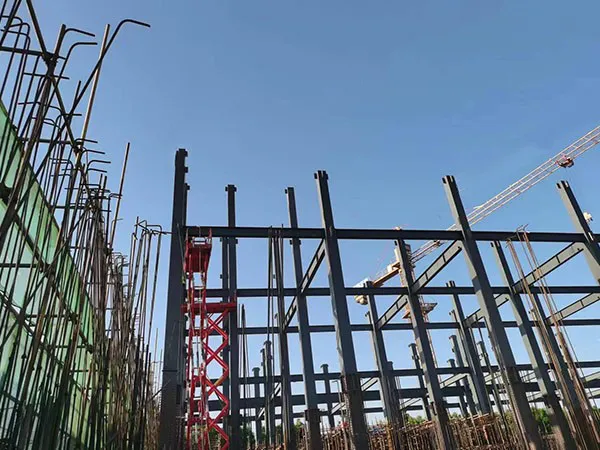
Steel Structure Cold Storage
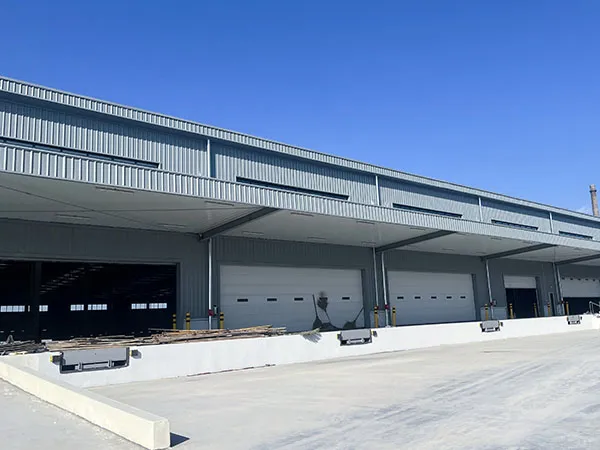
Logistics Park B04 Warehouse Steel Structure Project
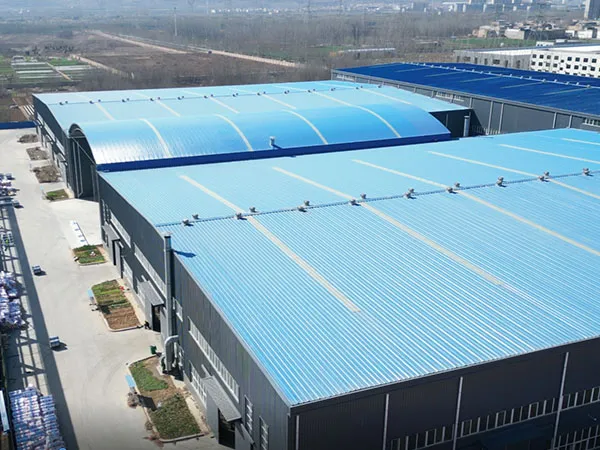
Fuchong Intelligent Glass Tempering Equipment Project
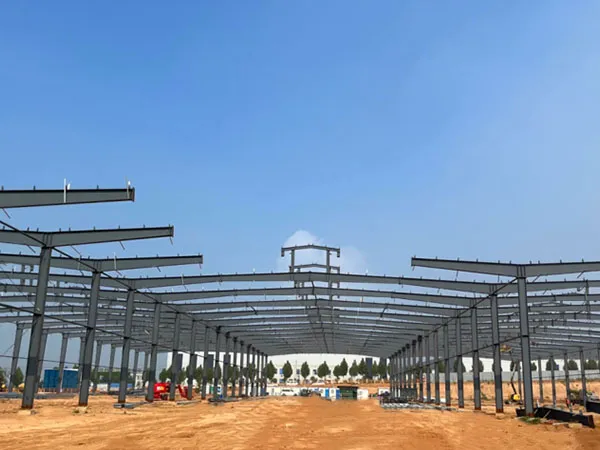
Luoyang Shangke Electrical Technology Co., Ltd. Project
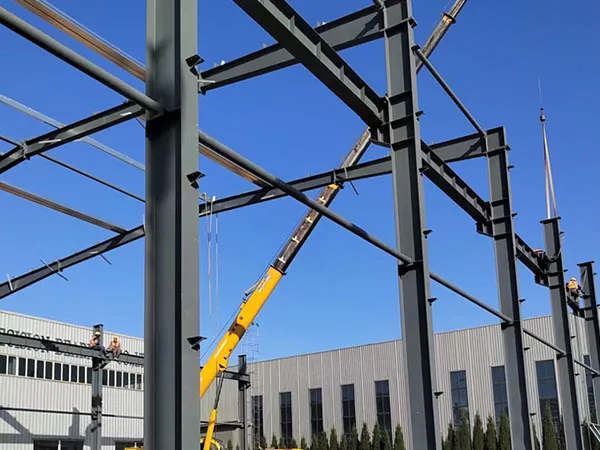
Luoyang Zhongyue Precision Bearing Co., Ltd. Steel Structure Plant Project
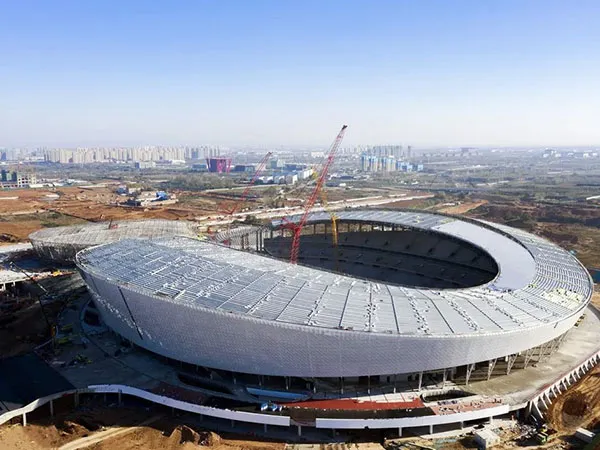
Luoyang Olympic Center Project